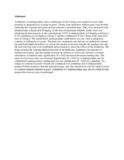The reversal of xylazine hydrochloride by yohimbine and 4-aminopyridine in goats.

View/
Date
2001Author
Ndeereh, DR
Mbithi, PMF
Kihurani, DO
Type
ArticleLanguage
enMetadata
Show full item recordAbstract
Yohimbine, 4-aminopyridine, and a combination of the 2 drugs were studied to assess their potential as antagonists to xylazine in goats. Twenty-four small East African goats were divided randomly into 4 groups of 6 goats each in a placebo-controlled study. They were all treated with intramuscular xylazine at 0.44 mg/kg. At the time of maximum sedation, sterile water was administered intravenously to the control group, 0.15% 4-aminopyridine at 0.4mg/kg to Group 2, 0.1% yohimbine at 0.25 mg/kg to Group 3, and the combination of the 2 drugs at the same dose rates to Group 4. The yohimbine/4-aminopyridine combination was also used to antagonise xylazine at 0.88mg/kg in 6 goats. The heart rate, respiratory rate and rate of ruminal movements, the pedal and palpebral reflexes as well as the reaction to noxious stimuli, the standing time and the total recovery time were established and evaluated to assess the effects of the treatments. The drugs reversed the xylazine-induced decrease in the heart rate, respiratory rate and rate of ruminal movements, and also rapidly restored the reflexes as well as the reaction to noxious stimulation. In addition, they significantly (P < 0.05) decreased the mean standing time. The mean total recovery time was decreased significantly (P < 0.05) by 4-aminopyridine and the yohimbine/4-aminopyridine combination, but non-significantly (P > 0.05) by yohimbine. No relapse in sedation occurred. Overall, the combination of yohimbine and 4-aminopyridine produced better responses than the individual drugs, and may therefore be used for rapid reversal of xylazine-induced sedation in goats. Yohimbine or 4-aminopyridine may also be useful for this purpose but recovery may be prolonged
Citation
J S Afr Vet Assoc. 2001 Jun;72(2):64-7Publisher
University of Nairobi Department of Clinical Studies, Faculty of Veterinary Medicine, University of Nairobi Department of Clinical Studies, Faculty of Veterinary Medicine, University of Nairobi
